Related Research Articles
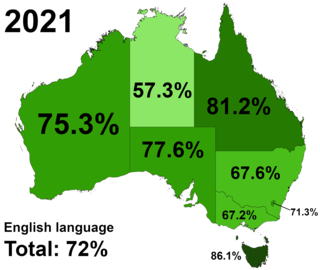
Australian English is the set of varieties of the English language based off the British dialect native to Australia. It is the country's common language and de facto national language; while Australia has no official language, English is the first language of the majority of the population, and has been entrenched as the de facto national language since British settlement, being the only language spoken in the home for 72% of Australians. It is also the main language used in compulsory education, as well as federal, state and territorial legislatures and courts.
In linguistics, voicelessness is the property of sounds being pronounced without the larynx vibrating. Phonologically, it is a type of phonation, which contrasts with other states of the larynx, but some object that the word phonation implies voicing and that voicelessness is the lack of phonation.
De facto describes practices that exist in reality, regardless of whether they are officially recognized by laws or other formal norms. It is commonly used to refer to what happens in practice, in contrast with de jure.

The Indigenous languages of Australia number in the hundreds, the precise number being quite uncertain, although there is a range of estimates from a minimum of around 250 up to possibly 363. The Indigenous languages of Australia comprise numerous language families and isolates, perhaps as many as 13, spoken by the Indigenous peoples of mainland Australia and a few nearby islands. The relationships between the language families are not clear at present although there are proposals to link some into larger groupings. Despite this uncertainty, the Indigenous Australian languages are collectively covered by the technical term "Australian languages", or the "Australian family".

The Papuan languages are the non-Austronesian languages spoken on the western Pacific island of New Guinea, as well as neighbouring islands in Indonesia, Solomon Islands, and East Timor. It is a strictly geographical grouping, and does not imply a genetic relationship.

The Pama–Nyungan languages are the most widespread family of Australian Aboriginal languages, containing 306 out of 400 Aboriginal languages in Australia. The name "Pama–Nyungan" is a merism: it is derived from the two end-points of the range, the Pama languages of northeast Australia and the Nyungan languages of southwest Australia.
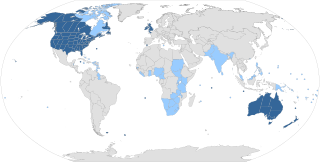
The English-speaking world comprises the 88 countries and territories in which English is an official, administrative, or cultural language. In the early 2000s, between one and two billion people spoke English, making it the largest language by number of speakers, the third largest language by number of native speakers and the most widespread language geographically. The countries in which English is the native language of most people are sometimes termed the Anglosphere. Speakers of English are called Anglophones.
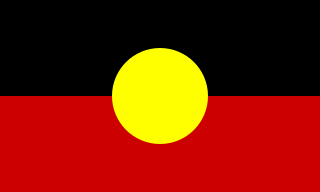
Aboriginal Australians are the various Indigenous peoples of the Australian mainland and many of its islands, excluding the ethnically distinct people of the Torres Strait Islands.
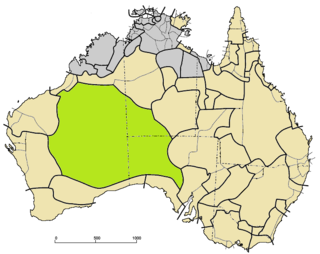
The Western Desert language, or Wati, is a dialect cluster of Australian Aboriginal languages in the Pama–Nyungan family.
The languages of Australia are the major historic and current languages used in Australia and its offshore islands. Over 250 Australian Aboriginal languages are thought to have existed at the time of first European contact. English is the majority language of Australia today. Although English has no official legal status, it is the de facto official and national language. Australian English is a major variety of the language with a distinctive accent and lexicon, and differs slightly from other varieties of English in grammar and spelling.
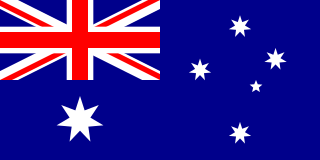
Australia, officially the Commonwealth of Australia, is a country comprising the mainland of the Australian continent, the island of Tasmania and numerous smaller islands. Australia has a total area of 7,688,287 km2 (2,968,464 sq mi), making it the sixth-largest country in the world and the largest in Oceania. It is the world's oldest, flattest, and driest inhabited continent, with some of the least fertile soils. It is a megadiverse country, and its size gives it a wide variety of landscapes and climates including deserts in the interior and tropical rainforests along the coast.
Diyari or Dieri is an Australian Aboriginal language spoken by the Diyari people in the far north of South Australia, to the east of Lake Eyre. It was studied by German Lutheran missionaries who translated Christian works into the language in the late 19th and early 20th centuries, so that it developed an extensive written form. Only a few fluent speakers of Diyari remained by the early 21st century, but a dictionary and grammar of the language was produced by linguist Peter K. Austin, and there is a project under way to teach it in schools.
Ngarrindjeri, also written Narrinyeri, Ngarinyeri and other variants, is the language of the Ngarrindjeri and related peoples of southern South Australia. Five dialects have been distinguished by a 2002 study: Warki, Tanganekald, Ramindjeri, Portaulun and Yaraldi.

English is a West Germanic language in the Indo-European language family, whose speakers, called Anglophones, originated in early medieval England on the island of Great Britain. The namesake of the language is the Angles, one of the ancient Germanic peoples that migrated to Britain. It is the most spoken language in the world, primarily due to the global influences of the former British Empire and the United States. English is the third-most spoken native language, after Mandarin Chinese and Spanish; it is also the most widely learned second language in the world, with more second-language speakers than native speakers.
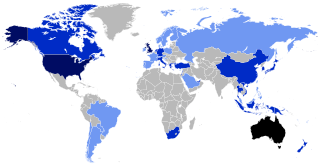
Australians, colloquially known as Aussies, are the citizens, nationals and individuals associated with the country of Australia. This connection may be residential, legal, historical or ethno-cultural. For most Australians, these connections exist and are collectively the source of their being Australian. Australian law does not provide for a racial or ethnic component of nationality, instead relying on citizenship as a legal status, though the Constitutional framers considered the Commonwealth to be "a home for Australians and the British race alone", as well as a "Christian Commonwealth". Since the postwar period, Australia has pursued an official policy of multiculturalism and has the world's eighth-largest immigrant population, with immigrants accounting for 30 percent of the population in 2019.
Indigenous Australians are people with familial heritage from, and/or recognised membership of, the various ethnic groups living within the territory of present day Australia prior to British colonisation. They consist of two distinct groups, which include many ethnic groups: the Aboriginal Australians of the mainland and many islands, including Tasmania, and the Torres Strait Islanders of the seas between Queensland and Papua New Guinea, located in Melanesia.
Awngthim is an extinct Australian Aboriginal language formerly spoken in Cape York in Queensland, Australia by the Winduwinda people. The Awngthim language region includes the areas around Weipa and the Cook Shire.
Ndra'ngith (Ntra'angith) is an extinct Australian language once spoken in the Cape York Peninsula of Queensland. Donohue (1991) identifies Ndra'ngith as the same dialect as Ntrwa'ngayth, but Sutton (2001) presents it as being distinct. Sutton also distinguishes it from the similar-sounding Ndrangith language and Ndwa'ngith language.

The Macro-Gunwinyguan languages, also called Arnhem or Gunwinyguan, are a family of Australian Aboriginal languages spoken across eastern Arnhem Land in northern Australia. Their relationship has been demonstrated through shared morphology in their verbal inflections.
References
- 1 2 3 Y202 Ndrangith at the Australian Indigenous Languages Database, Australian Institute of Aboriginal and Torres Strait Islander Studies